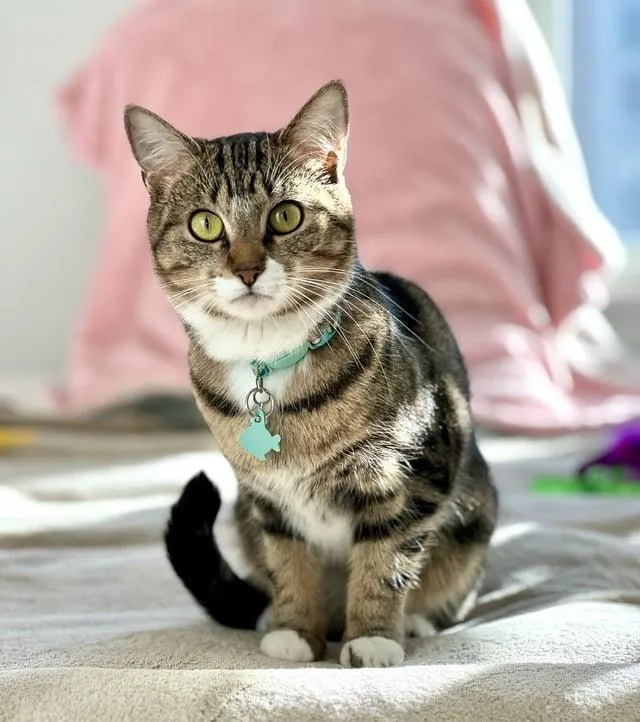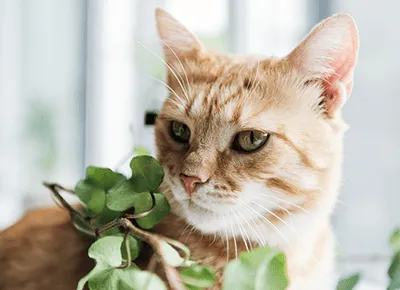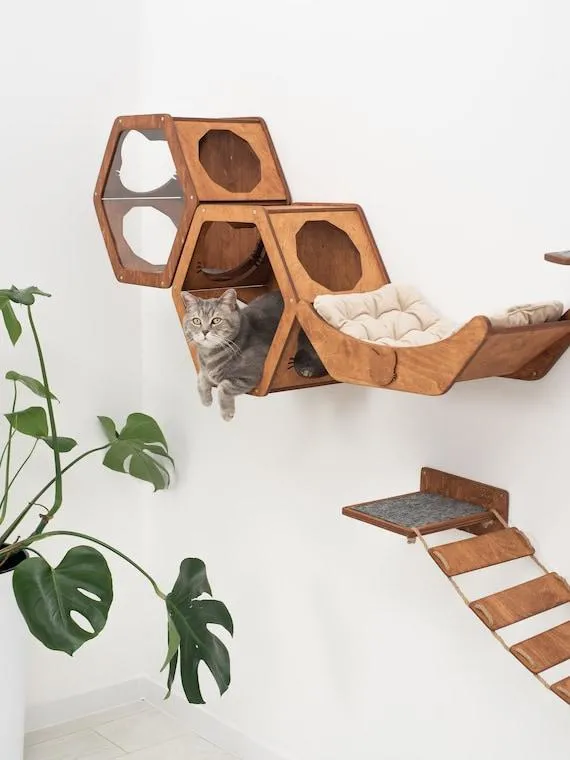Monstera deliciosa Plants and Cats: A Complete Guide
The beautiful Monstera deliciosa, commonly known as the Swiss cheese plant or monstera, has become a popular houseplant in recent years. Its glossy, heart-shaped leaves with distinctive natural fenestrations make it a gorgeous addition to any home. However, if you have cats, keeping a monstera may present some challenges. As curious companions, cats are often attracted to plants and may nibble on their leaves. In this comprehensive guide, I’ll address all the important questions a cat owner may have about growing Monsteras safely.
Are Monsteras Toxic to Cats?
The short answer is yes – most parts of the monstera plant are considered toxic to cats if ingested. The sap and leaves contain calcium oxalate crystals which can cause mouth irritation and damage to the gastrointestinal tract if consumed. From my experience as a veterinary nurse, this crystal buildup in the organs can lead to painful inflammation, vomiting, and diarrhea in cats. While some pets may only sample a leaf and suffer no ill effects, others are more sensitive and even a small amount could make them quite sick.
What Are the Signs of Monstera Toxicity in Cats?
If your cat eats part of a monstera plant, be on the lookout for these common symptoms of toxicity:
- Drooling and pawing at the mouth – the crystals cause intense irritation.
- Vomiting, sometimes with blood.
- Diarrhea, which may contain blood.
- Loss of appetite.
- Depression and lethargy.
It’s important to monitor your cat closely and contact your vet right away if any of these signs develop after possible monstera ingestion. Prompt veterinary treatment can help flush the plant material and crystals from the digestive system before serious damage occurs.

How Can I Cat-Proof My Monstera?
While keeping Monsteras and cats completely separated is safest, there are some steps you can take to help deter cats from tasting your plant:
- Place the monstera high up, out of paw’s reach on a tall plant stand, shelf, or hanging basket.
- Cover the soil with decorative gravel to discourage digging and root nibbling.
- Use a sturdy plant cage or cover the leaves and stems with chicken wire or something similar.
- Consider moving the plant to a “cat-proofed” room when you’re not around to supervise.
- Try distracting curious cats with other approved houseplants, scratching posts, or interactive toys.
It’s also a good idea to monitor cats closely when playing or lounging near any plants. A stern “leave it” command and gentle redirection is usually enough to deter most sampling attempts, in my experience. With some prevention strategies in place, you can hopefully keep your furry friends and leafy plants safely coexisting.
What If My Cat Already Ate Part of the Monstera?
If you spot your cat chewing on monstera leaves or suspect ingestion, here are the basics of what to do:
- Remain calm but remove the cat immediately from access to more of the plant.
- Induce vomiting only if you witnessed ingestion within the past hour – call your vet for instructions on how to do this safely at home.
- Otherwise, do not induce vomiting and instead watch for symptoms as noted above.
- Contact your veterinarian right away to report the incident and get their advice on next steps like bringing your cat in for monitoring and possible treatment.
Acting quickly with veterinary guidance gives the best chance of preventing toxicity issues from developing. With prompt care, most cats make a full recovery after monstera ingestion. However, it’s always better to avoid these situations in the first place through careful planting and feline supervision.

Any Other Tips for Living with Cats and Houseplants?
Here are some additional suggestions based on my experiences keeping various plant friends around my own furry family:
- Do thorough research on plant toxicity for cats before buying. Some “non-toxic” plants can still cause mild stomach upset.
- Introduce new plants slowly when cats are around to allow them time to inspect without nibbling.
- Consider potting edible catnip or other safe herb plants as a distraction from forbidden flora.
- Use bitter apple, hot pepper, or citrus spray on leaves as a deterrent – reapply after rain or weekly.
- Trim off any luscious-looking fallen leaves that may tempt a curious kitty.
- Brush up on cat CPR basics just in case – it’s comforting to know you can help until the vet arrives.
With care, education and some funny furry oversight, you can enjoy lush houseplants safely alongside your kitty companions. As always, preventing access is the surest way to keep both happy and healthy at home.
I hope this comprehensive guide has answered any questions you may have had about growing Monstera deliciosas when cats are also part of the picture. Please let me know if you need any other plant or pet advice! Wishing you and your cats many happy, safe years of indoor greenery enjoyment ahead.
Monsteras and Cats: An Informative Guide

| Category | Details |
|---|---|
| Toxicity level | Monstera deliciosa plants are toxic to cats if ingested. The sap can cause mild to severe irritation. |
| Safe exposure | Small amounts of contact with the skin or fur are generally not harmful. Keep cats away from chewing or eating any part of the monstera plant. |
| Symptoms of poisoning | Vomiting, drooling, diarrhea. More severe cases could involve mouth irritation, difficulty swallowing or breathing. Seek vet care if ingestion is suspected. |
| Cat-proofing | Keep monsteras out of reach by placing them high up or behind closed doors. Remove fallen leaves or pieces immediately to prevent ingestion. |
| Safe alternatives | Plants like English ivy, pothos or snake plants are low-risk & cat-friendly decorations for indoor spaces. |
FAQ
-
Can monstera plants kill cats?
Basically, monstera plants are not actually poisonous for cats. While the plant may not be the nicest snack, it’s generally not harmful for cats to ingest a leaf or two. The saps and sugars inside could possibly cause an upset tummy. At the same time, if a cat chews up and eats a huge handful of leaves, it may experience minor digestive issues. But it’s unlikely to do any real damage.
-
Are monstera plants toxic to cats if ingested?
Kinda sorta. Monstera leaves contain calcium oxalate crystals that can irritate a cat’s mouth and cause some minor discomfort if eaten. However, these crystals are not generally toxic in small amounts. The plant would have to be a cat’s sole diet for a long period to potentially cause health issues due to calcium oxalate buildup. So an occasional nibble probably won’t do much harm. Nevertheless, it’s best to keep monsteras out of reach since chewing on leaves isn’t too enjoyable for cats.
-
Can a cat be around a monstera plant?
On the whole, it’s fine to have a monstera plant near a cat as long as the cat can’t easily access the leaves or soil. Cats might be curious to inspect or bat at dangling monstera leaves. Does this mean they can lounge with a monstera as a houseplant buddy? Maybe, but monitor them closely at first in case kitty takes an exploratory nibble. Most cats will likely leave it alone once they realize it’s not the tastiest chew toy. As for cleaning, just be sure no flecks of soil remain on paws or fur that could be ingested later.
-
Will a monstera hurt my cat’s paws?
You know, I never actually considered whether the monstera plant could hurt a cat’s paws before. The waxy leaves are pretty smooth, so I don’t think the plant itself would cause issues. However, the jagged edges of a newly unfurling leaf might conceivably scratch a paw if kitty decides to do a big stretch on top of the plant. And those tiny needle-like spikes found at the bases of some monstera leaves might jab a delicate paw pad. So if a particularly rambunctious or clumsy feline friend knocks the plant over, perhaps have some petsafe paw cream on hand – just in case.

-
Should I keep my monstera plant out of reach of cats?
To really be on the safe side, it’s probably best to maintain a boundary between curious kitties and your precious monstera. After all, no one wants to come home to a chewed up or uprooted houseplant! Maybe place it up high, behind a baby gate, or inside a tall hanging basket out of paw’s and whiskers’ reach. It removes any temptation and protects your plant from accidental knocks or swipes that could dislodge leaves or scatter soil. So in short – yes, putting it somewhere kitties can look but not lick seems like wise plant parenting when cats are involved.
To summarize this FAQ block on monstera plants and kitties: While ingestion of a leaf or two likely won’t do a cat serious harm, it’s still best to keep monsteras out of paws’ reach as a precaution. Monitor kitty interactions closely at first and have paw protection available just in case. With a little feline-proofing, monsteras and most other houseplants can coexist peacefully with curious cats. Does this help alleviate any safety concerns? Let me know if you need any clarification or have additional kitty plant questions!
